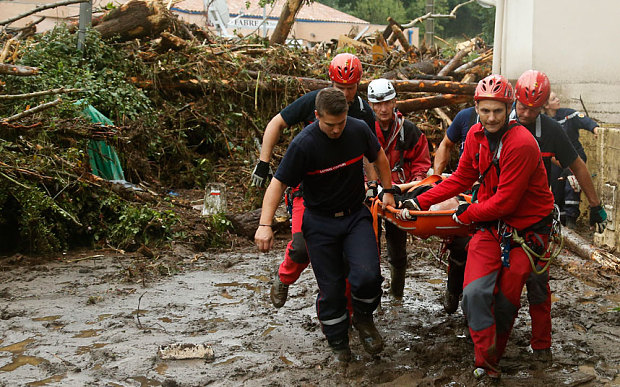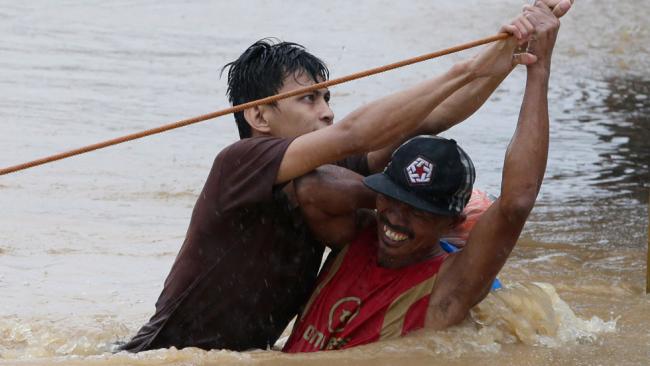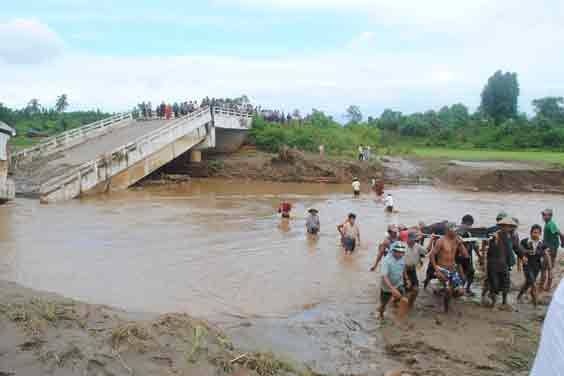
© Photo: EPA
Rescue workers evacuate a man from his home after it was hit by heavy floods in Lamalou-les-bains
Storms turn peaceful river near camping site in southern France into a raging torrent with people swept away Four people died when storms turned a peaceful river that bordered their camping site in southern France into a raging torrent that swept them away, local authorities said Thursday.
The site in Lamalou-les-Bains was
devastated by the overnight flood as storms that had already killed an elderly lady in the nearby region of Aveyron also left a person missing in another neighbouring district.
Authorities in the Herault district where Lamalou-les-Bains is located had initially said five had perished in the tragedy, but later revised the toll down to four and said two other people were still missing.
In one incident, a man who was trying to save a woman from drowning saw his own wife and daughter swept away in their caravan, the town's mayor told AFP.
"The father, who was around 60, went out and saw a woman who was going to drown," Philippe Tailland said.
"He held her by the hand but unfortunately, he had to let go of this woman.
"When he turned around, he saw his caravan being swept away with his wife and 34-year-old daughter inside," he said.
The caravan was later found stuck under a bridge and the body of his wife discovered inside. His daughter is still missing.
He is "in a catastrophic state," Tailland said.



Comment: In sum, 2013 saw fewer disasters, deaths, victims and economic damages on the whole. However, it saw isolated instances of record-breaking disasters, while floods and storms were responsible for the worst damage in terms of people affected. China and the U.S. continue to be hit the hardest, with China enduring its highest number of disasters in the last decade.
As Pierre Lescaudron describes in his book, Earth Changes and the Human-Cosmic Connection, this apparent decrease in disasters is probably due to an overall decrease in the Earth's electric field (due to a solar-companion-induced drop in the Sun's activity) and an increase in the conductivity of that field (due to the increase in comet dust entering our atmosphere). The result: more frequent, smaller storms (hurricanes, tornadoes, lightning, etc.). This will show up in the statistics as a drop in major natural disasters, but as we can see around us, it doesn't say much about the continued crazy weather the planet has been experiencing the last couple years.
It's the time for floods and storms to do their damage, while cosmically-induced processes perhaps build up for some future, major disasters. Think Chelyabinsk. Think Ebola.